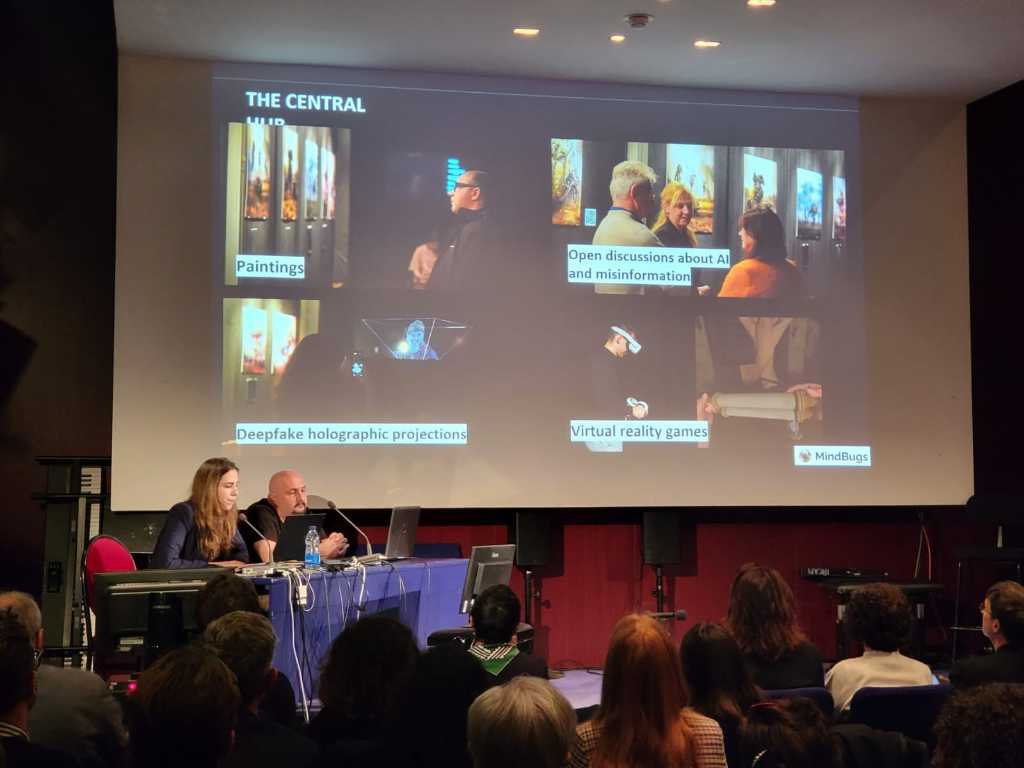Written by Ruxandra Hurezean, article in Romanian is available under this link
“We Have a Nuclear Plant, We Understand Its Power, and We Need to Know How Bad It Would Be If It Went Boom!” – Ioana Chereș, a PhD student from Cluj-Napoca, creates art using technology to fight disinformation.
Art is one of the most effective tools against disinformation, propaganda, and manipulation because it evokes emotions.
Technology, particularly Artificial Intelligence (AI), can provide the means for art to become interactive – something you can feel, see, and even communicate with, Ioana Chereș tells me as we sip our tea at a café in the old town of Cluj-Napoca.


